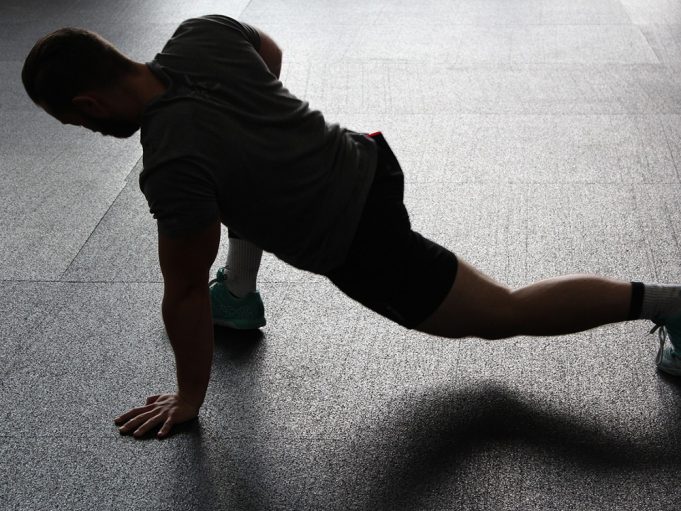Many officials procrastinate until just before the season of the sport they are working to get into “game shape.” That method of thinking can have negative effects.
The downside?
Pulled hamstring muscles, injured quadriceps muscles, sore Achilles tendons, sore back muscles, just to name a few. The fact is the body needs a minimum of six weeks or much longer to get used to the amount of stress being placed on it. Sometimes we refer to that as the period of adaptation. Simply put, the body adapts and makes the physiological adjustments to perform more efficiently. All of that involves cardiovascular fitness, strength training and flexibility training. Neglect in any one of those areas by officials can be a nightmare for not only the official but assigning secretaries, who suddenly are forced to find replacements.
There are proactive steps that officials can take to prevent some injuries and finish the season strong:
Cardiovascular fitness.
It is vital because the human body is made for movement. The heart and lungs are key components. Officials should have a regular routine that involves strengthening the heart and lungs. That can be achieved by doing activities such as biking, swimming, tennis, walking, jogging, hiking, etc.
However, an official must know his or her target heart rate range. That is the process of taking the number 220 minus your age and multiplying the answer by .60 and .80. For example, 220 – 45 = 175. So, 175 x .60 = 105 and 175 x .80 = 140. Those numbers (115 and 140) are mathematical ways of knowing if you are stressing the heart such that there are real cardio benefits. When engaging in aerobic activities the heart needs to work between 60 percent and 80 percent of its maximum effort. Five minutes into your workout, check your pulse to get your heart-rate range. In the example provided, a 45-year-old official would strive to keep his or her heart rate between 105 and 140 beats per minute. A quick way to do that is to check for 15 seconds and multiply by four. If your pulse is 30 beats in 15 seconds, it is 120. Therefore, that official is staying within his or her heart rate range of 105 to 140 beats per minute.
According to the Center for Disease Control (CDC) and the American Heart Association, Americans should be exercising three to five days a week.
Strength training.
Weight-bearing exercises will build muscle tone and definition. Push-ups, pull-ups, sit-ups and any other activities that put stress on muscle in the body improve balance, take the stress off bones and joints, reduce fat and burn calories (even while you are sleeping).
Advantages of strength training include more energy stored in the mitochondria of cells, translating to more energy during high-intensity games.
Muscle tone also will make you fit and confident. Perception is reality, so fans, coaches and players are more likely to have a negative opinion of overweight and out-of-shape officials. You could be the best official on the court, but quite often you are judged rightly or wrongly by how you look in uniform. Spend at least two days a week in a strength-training session. It is wise to perform between eight and 12 repetitions and two to three sets; resting a few minutes between sets.
In the first week or two, muscles will be sore because of the adaptation period. After that, you should notice improved energy and more muscular endurance. Benefits will go far beyond officiating, like completing more chores among other things.
Flexibility training.
It is arguably one of the most neglected aspects of officiating. Cats and dogs instinctively stretch many times a day; humans do not. I have experienced basketball officials who walk in, complete a pregame conference and immediately work the game. That is one of the most dangerous practices in officiating.
Muscles need to be stretched in order to improve flexibility and prevent injuries. Great athletes understand that fact. They know that their careers can be extended if they have improved flexibility. There is a correlation between stretching and fewer injuries.
Flexibility training includes exercises such as sitting toe touches, standing quadriceps stretch, full-body curls, calf stretches, etc. Stretching should be done at least twice a day for about 10 to 20 minutes. Each stretch should last no longer than 20 seconds. Over time that technique will improve range of motion and can improve energy. Tai chi and yoga are two popular exercises that have been known to improve overall flexibility.
Some of the many reasons that sports officials need to get fit long before the season begins include:
- Improved energy levels
- Better sleep patterns
- Reduce fat storage in body
- Lean body and athletic look
- Remove unhealthy stress
- Improved health
- Lower bad cholesterol/improve good cholesterol
- Perform activities longer (cardio, muscular endurance)
- Remove damaging free radicals from the body
- Slow down the aging process
Getting fit and staying fit transcend time and offer benefits that go well beyond officiating. Get in shape and stay in shape. You will be a better official on and off the playing field and will improve your overall health and wellness.
What's Your Call? Leave a Comment:
Note: This article is archival in nature. Rules, interpretations, mechanics, philosophies and other information may or may not be correct for the current year.
This article is the copyright of ©Referee Enterprises, Inc., and may not be republished in whole or in part online, in print or in any capacity without expressed written permission from Referee. The article is made available for educational use by individuals.

















